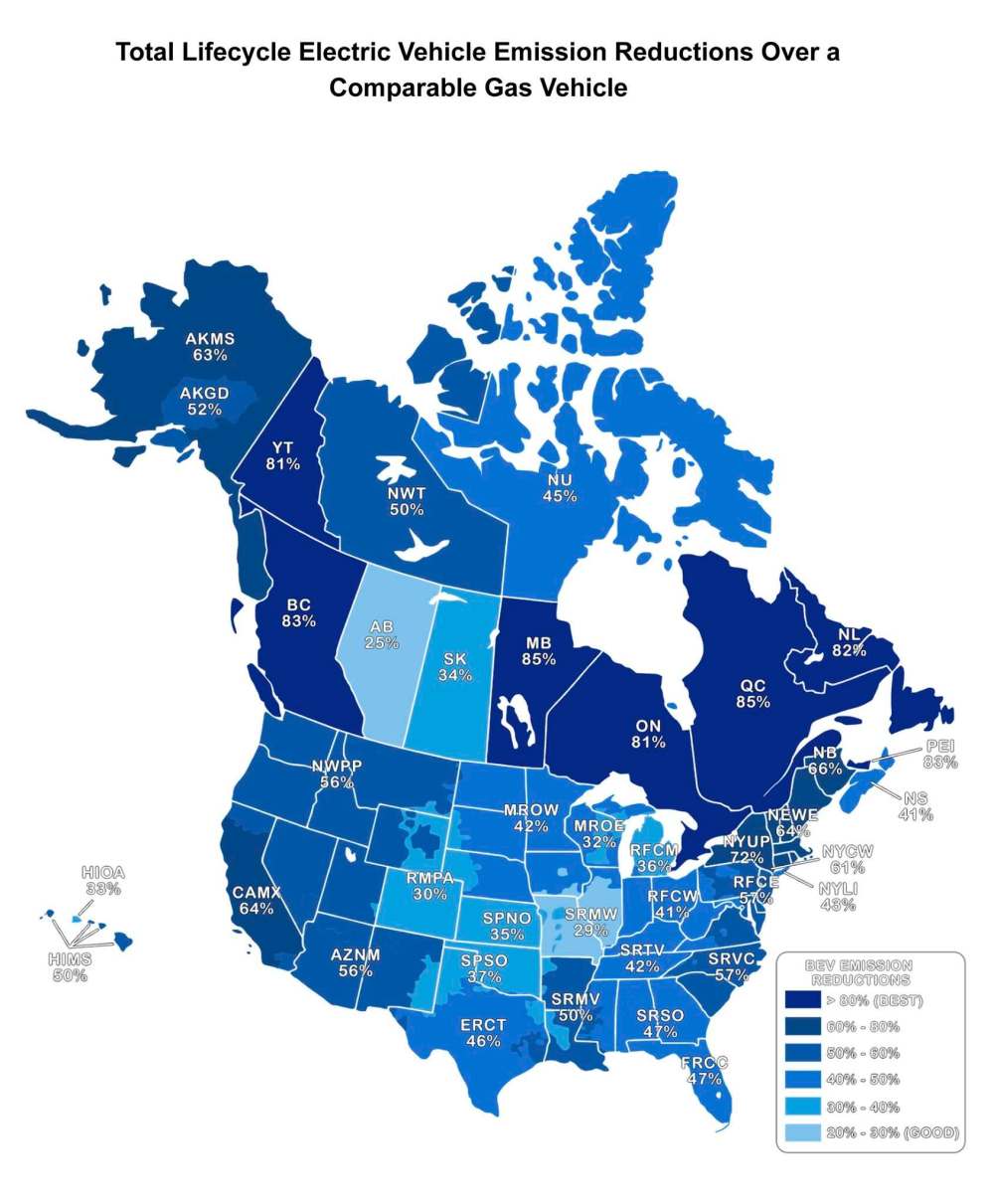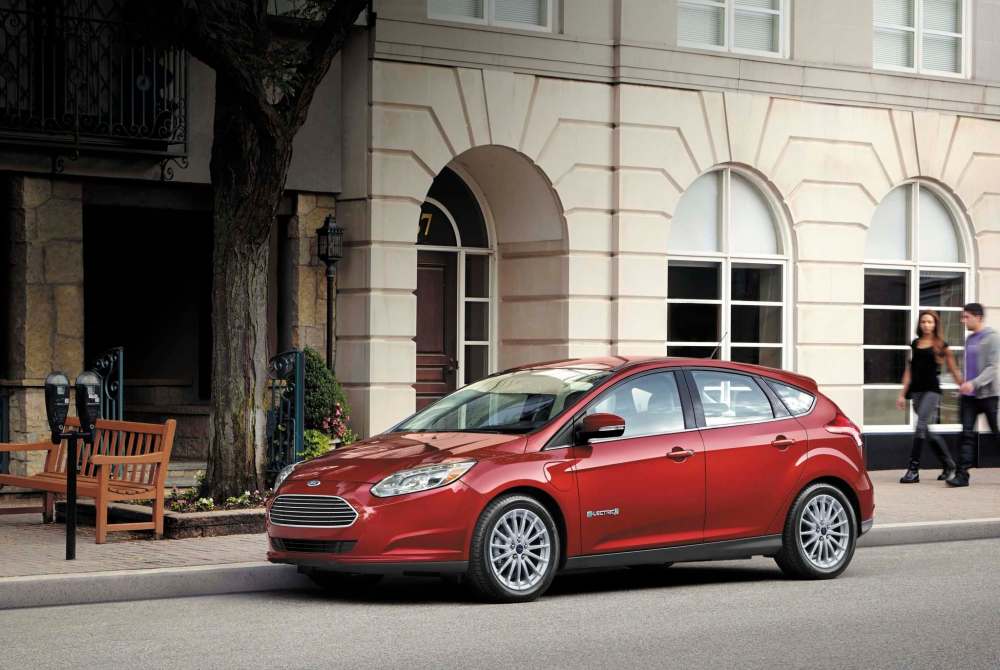Leading the charge
Switching to an electric vehicle puts Manitobans on top of emissions savings; too bad incentives and infrastructure are lacking
Advertisement
Read this article for free:
or
Already have an account? Log in here »
To continue reading, please subscribe:
Monthly Digital Subscription
$1 per week for 24 weeks*
- Enjoy unlimited reading on winnipegfreepress.com
- Read the E-Edition, our digital replica newspaper
- Access News Break, our award-winning app
- Play interactive puzzles
*Billed as $4.00 plus GST every four weeks. After 24 weeks, price increases to the regular rate of $19.00 plus GST every four weeks. Offer available to new and qualified returning subscribers only. Cancel any time.
Monthly Digital Subscription
$4.75/week*
- Enjoy unlimited reading on winnipegfreepress.com
- Read the E-Edition, our digital replica newspaper
- Access News Break, our award-winning app
- Play interactive puzzles
*Billed as $19 plus GST every four weeks. Cancel any time.
To continue reading, please subscribe:
Add Free Press access to your Brandon Sun subscription for only an additional
$1 for the first 4 weeks*
*Your next subscription payment will increase by $1.00 and you will be charged $16.99 plus GST for four weeks. After four weeks, your payment will increase to $23.99 plus GST every four weeks.
Read unlimited articles for free today:
or
Already have an account? Log in here »
Hey there, time traveller!
This article was published 16/09/2017 (2954 days ago), so information in it may no longer be current.
Manitobans who switch to an electric vehicle from gasoline lead the continent in the benefits bestowed on the environment, a new study suggests.
The study, by the 2 Degrees Institute, puts Manitoba and Quebec drivers on top of North America for emissions saved over their lifetimes, saving 85 per cent of CO2 emissions and reducing their carbon footprints by 25 per cent.
“It is probably the single-biggest thing a person can do to reduce their carbon footprint,” said Ryan Logtenberg, a director and researcher at the institute.
Manitoba gets high marks due to its reliance on hydroelectricity for 96 per cent of the province’s power, he said. Quebec, Newfoundland and Ontario also rank highly for the same reason.
Even California, where it can be argued the electric vehicle movement began, pales in comparison at 64 per cent savings, the study said.
Logtenberg said the institute ignored the environmental impact of building hydro dams — flooding river valleys upstream from dams created vast quantities of CO2 as newly flooded vegetation decomposed — but said the study also ignored the environmental impact of extracting oil and building refineries and pipelines.
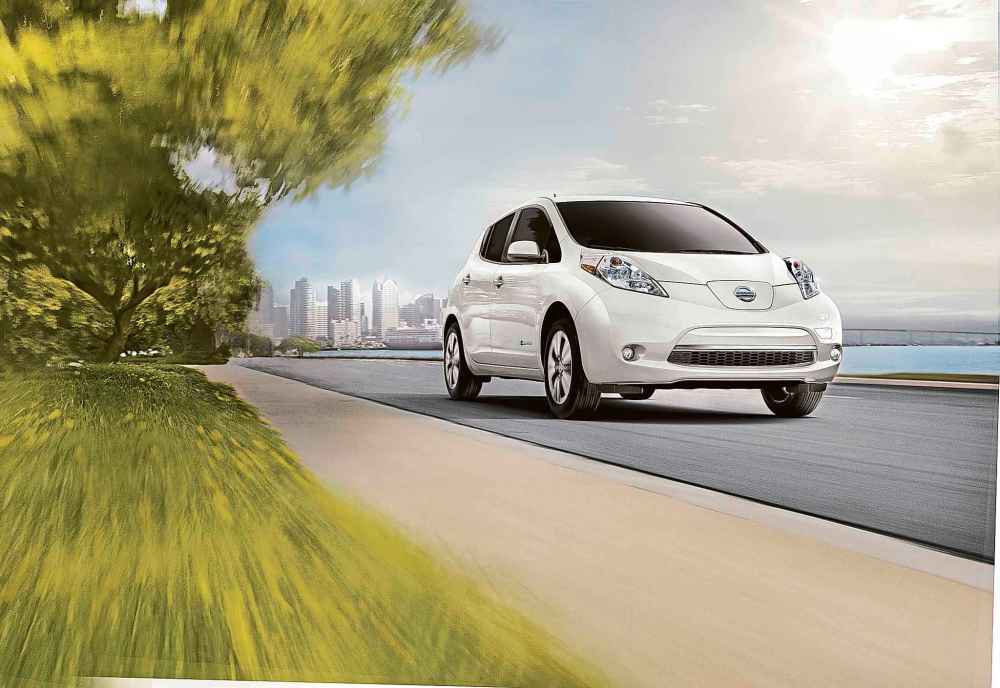
“Driving an EV in Manitoba generates the same emissions as driving a comparable gas vehicle that gets 0.4 litres per 100 kilometres, or 616 miles per gallon, fuel economy,” co-author Barry Saxifrage said. “Another way to look at this is that 24 electric cars would produce the same emissions as one gas-powered car averaging 9.4 litres per 100 kilometres.
“These are huge emissions savings and we hope these findings help governments and individuals decide how best to reduce their carbon footprints.”
The economics of electric vehicles remain elusive. For instance, a modestly equipped Volkswagen Jetta is about $20,000. A VW e-Golf starts at nearly $36,000. The Chevrolet Bolt starts at $43,195. In Ontario, Quebec and British Columbia, provincial governments provide generous rebates to take the sting out of the purchase price.
Those are hard numbers to overcome, but Plug’n Drive, a Canadian electric vehicle advocacy group, estimates cost parity with gasoline vehicles to arrive within five years. Logtenberg was less optimistic, saying, “within the next decade.”
“Filling” an EV takes a couple dollars’ worth of electricity, compared with $48 to fill a Focus from empty (based on prices, Sept. 12). Given a $10,000 price difference between a Focus hatchback and a Focus EV, Logtenberg pegged the break-even point — the time when a driver starts saving money — at roughly six years.
The challenge for environmentalists now is to sell the general public on the benefits of electric vehicles that go beyond a savings in emissions, Logtenberg said. These include the ability to pre-heat a car in winter and pre-cool it in summer while plugged in for charging. As well, EVs typically have amenities built in to try to take some of the pain out of the purchase price, such as heated steering wheels, adaptive cruise control, satellite radio or a sunroof.
There are five EVs available in Manitoba: the Ford Focus EV, Volkswagen e-Golf, Nissan Leaf and Tesla Model S and Model X. Nott Autocorp is a Tesla agent and can order new cars, as well as sell pre-owned Teslas from inventory. Mitsubishi has discontinued the iMiEV and has only a small number remaining in Canada.
The Chevy Bolt is currently only available in Ontario, Quebec and British Columbia, with national rollout starting early in 2018.
The BMW i3, which comes as an EV and as an EV with a gas range extender engine, isn’t yet available in Winnipeg, but BMW Canada has confirmed Winnipeg’s Birchwood BMW will become an iRetailer shortly.
The Smart Fortwo EV is expected here by spring, and Mercedes-Benz is expected to launch the EQ C electric SUV by this time next year. Mercedes has a goal of 25 per cent of sales to be fully electric by 2022.
Volvo has announced that by 2019, all of its vehicles will be electrified in one form or another, either full electric or hybrid gas-electric.
Here’s a look at three EVs now available here:
2017 Volkswagen e-Golf
The Golf, with more than 33 million sold worldwide in the last 40 years, has earned a reputation as one of the most fun-to-drive hatchbacks on the market, and the e-Golf lives up to that reputation.
To go electric, little was sacrificed. The car still has the same four-wheel independent suspension as gas models, with minimal intrusion into the cabin and cargo area for the battery.
The e-Golf has a range of up to 200 kilometres on a single charge and takes five hours to charge with a Level 2 charger at home or 30 to 45 minutes at a Level 3 direct-current fast-charger.
With 214 pound-feet of torque, but almost 227 extra kilograms of weight, the e-Golf isn’t as fast as a gasoline Golf, but scoots from 0 to 100 km/h in 9.4 seconds.
It starts at $35,995, not including freight. Manitoba’s two Volkswagen dealers, St. James Volkswagen and Knight Auto Haus Volkswagen, are unique in Canada as currently the only dealers outside of the three rebate-providing provinces to sell the e-Golf.
St. James VW sales manager Bryan Romaniuk said he doesn’t expect to sell many electrics anytime soon, but spent $60,000 to install a charger and qualify for the e-Golf because “we think this is the next big wave and we want to be out in front of it.”
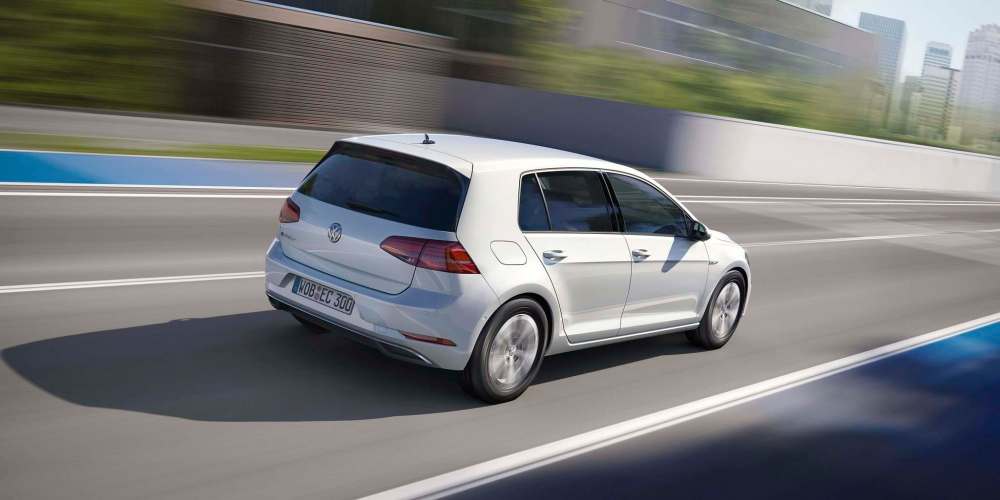
Ford Focus EV
Arguably the lowest-priced EV still on the market at $28,403, the Focus EV is a re-fitted electric version of the gas-powered Focus. That fact carries with it good news and bad news.
The good news is the EV has the same suspension setup as the gas model, so the handling is similar if not better, owing to the lower centre of gravity and improved weight distribution due to the battery.
The bad news is Ford wasn’t able to hide the battery quite as well as VW did in the e-Golf. The cargo area floor is raised about four inches to accommodate the battery, and that kills about 258 litres of cargo space behind the rear seat. It does gain about 42 litres of hidden cargo space, however.
The range of the Focus EV is competitive, at about 185 kilometres per charge. Ford doesn’t specify a fast-charge time, but the EV charges on a Level 2 charger in the same time as the e-Golf, five hours.
Nissan Leaf
The current Leaf was launched in 2010 and Nissan claims it’s the best-selling pure EV on the market, with 240,000 sold worldwide. A new Leaf is due out next year as a 2018 model, with 241 kilometres of range, up from the current model’s 172 kilometres.
The 2017 model starts at $33,998, and features a number of standard amenities, including heated steering wheel, satellite radio, heated front and rear seats, push-button start and rear-view camera.
Cargo space in the Leaf with the rear seat up is more than the Focus EV’s, but not quite as good with the rear seat folded.
kelly.taylor@freepress.mb.ca
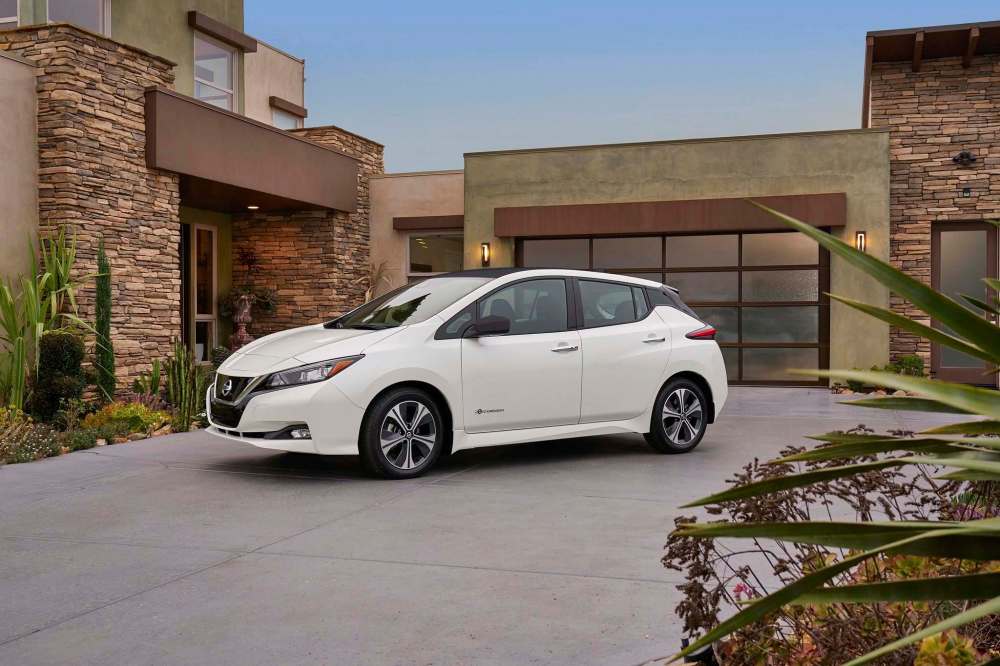

Kelly Taylor
Copy Editor, Autos Reporter
Kelly Taylor is a copy editor and award-winning automotive journalist, and he writes the Free Press‘s Business Weekly newsletter. Kelly got his start in journalism in 1988 at the Winnipeg Sun, straight out of the creative communications program at RRC Polytech (then Red River Community College). A detour to the Brandon Sun for eight months led to the Winnipeg Free Press in 1989. Read more about Kelly.
Every piece of reporting Kelly produces is reviewed by an editing team before it is posted online or published in print — part of the Free Press‘s tradition, since 1872, of producing reliable independent journalism. Read more about Free Press’s history and mandate, and learn how our newsroom operates.
Our newsroom depends on a growing audience of readers to power our journalism. If you are not a paid reader, please consider becoming a subscriber.
Our newsroom depends on its audience of readers to power our journalism. Thank you for your support.


